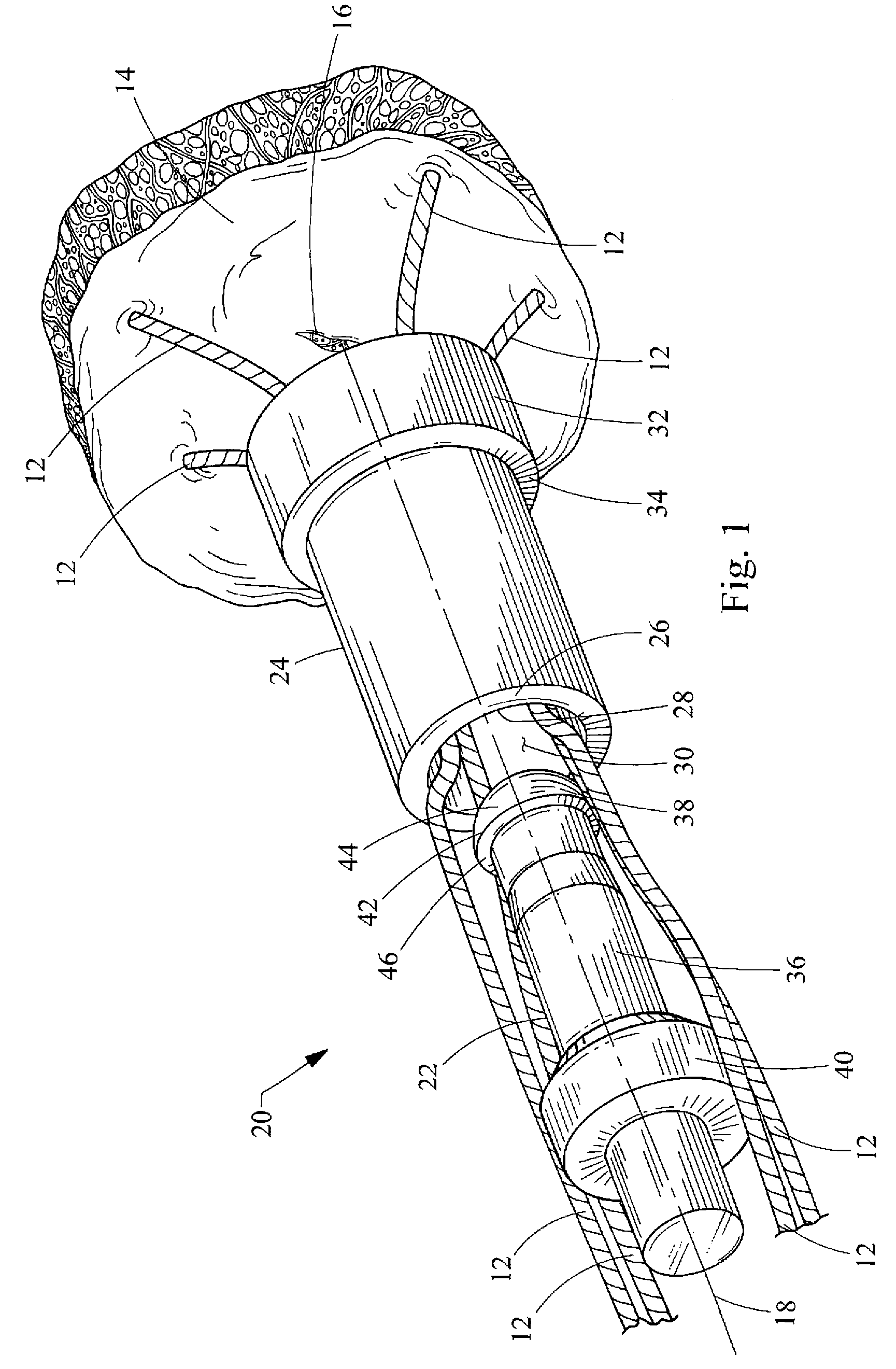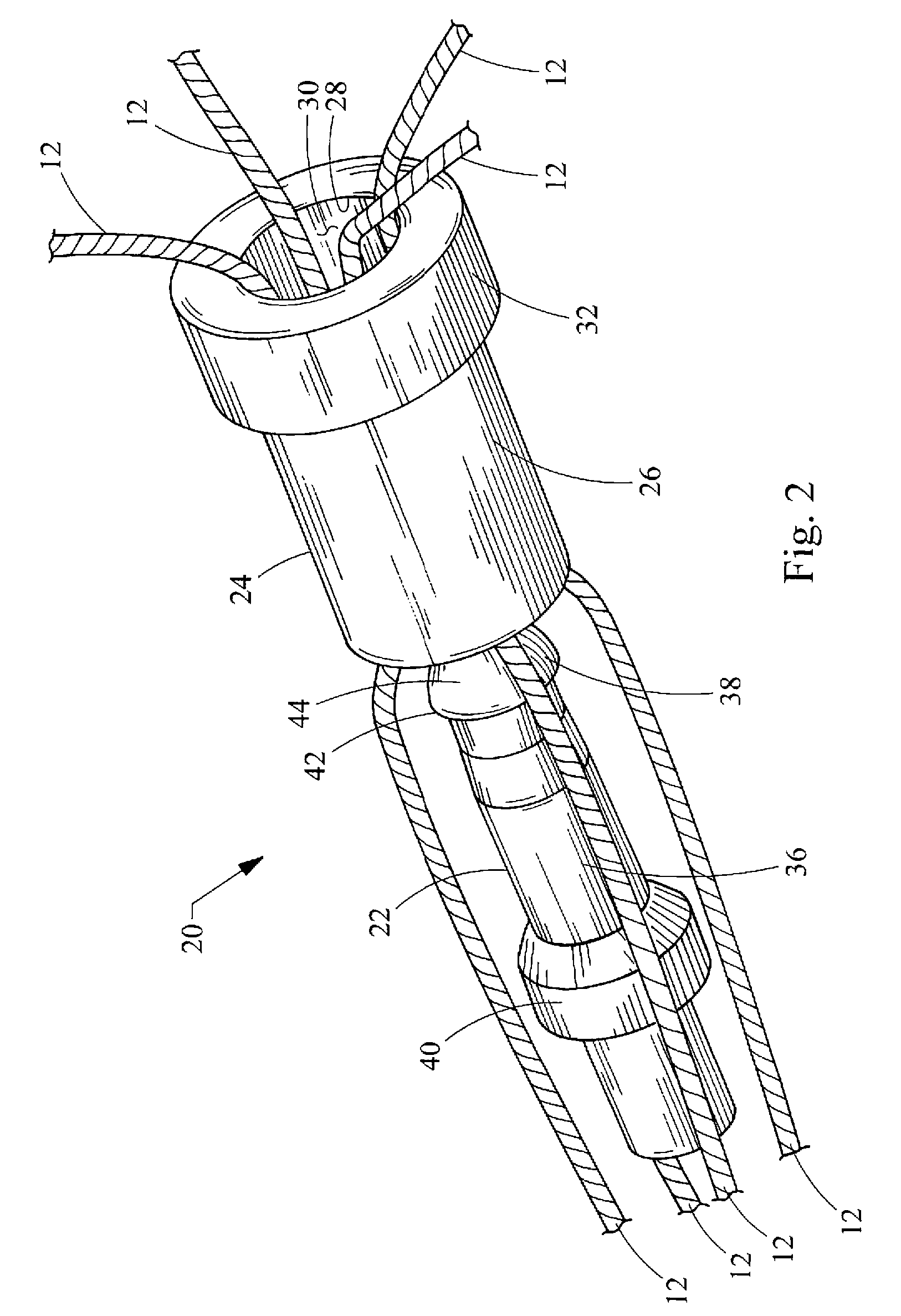Suture lock
a technology of suture locks and strands, applied in the field of suture locks, can solve the problems of requiring a significant level of skill and coordination from the medical professional, the difficulty of manually tying sutures together to close a perforation, and the difficulty of tying sutures well documented
- Summary
- Abstract
- Description
- Claims
- Application Information
AI Technical Summary
Benefits of technology
Problems solved by technology
Method used
Image
Examples
Embodiment Construction
[0018]Turning now to the figures, FIGS. 1-4 depict one embodiment of a suture lock 20 and its components, constructed in accordance with the teachings of the present invention. The suture lock 20 generally comprises a locking pin 22 and a retaining sleeve 24 which are used to fix the strands 12 of one or more sutures relative to bodily tissue 14, such as for closing a perforation 16 in the tissue 14. Preferably, the suture is formed of nylon 2-0 and of the monofilament variety, although any suture material or construction may be used with the suture lock 20 of the present invention. Generally, the suture strands 12 will be placed through the tissue 14 and connected thereto using standard suturing techniques or devices such as T-anchors, staples or the like, leaving the strands 12 on one side of the tissue 14 for tying them together. Although the retaining sleeve 24 and locking pin 22 have been depicted as having circular cross-sections, it will be recognized that other cross-section...
PUM
 Login to View More
Login to View More Abstract
Description
Claims
Application Information
 Login to View More
Login to View More - R&D
- Intellectual Property
- Life Sciences
- Materials
- Tech Scout
- Unparalleled Data Quality
- Higher Quality Content
- 60% Fewer Hallucinations
Browse by: Latest US Patents, China's latest patents, Technical Efficacy Thesaurus, Application Domain, Technology Topic, Popular Technical Reports.
© 2025 PatSnap. All rights reserved.Legal|Privacy policy|Modern Slavery Act Transparency Statement|Sitemap|About US| Contact US: help@patsnap.com



